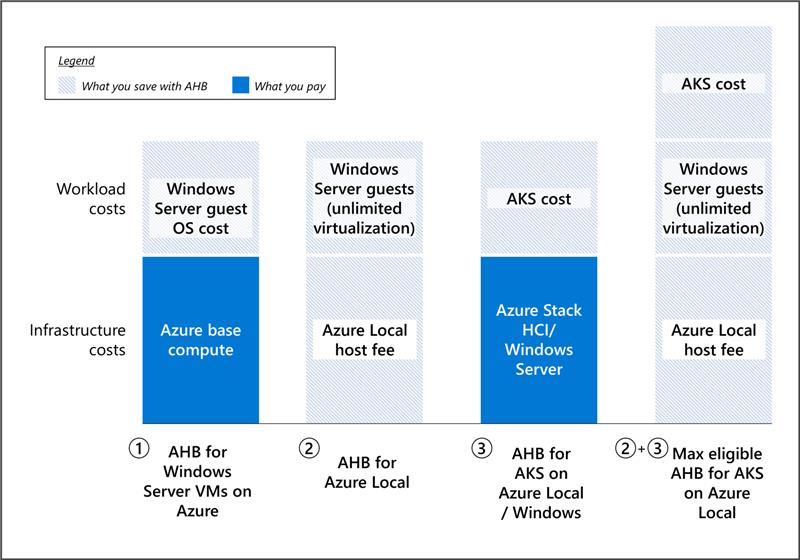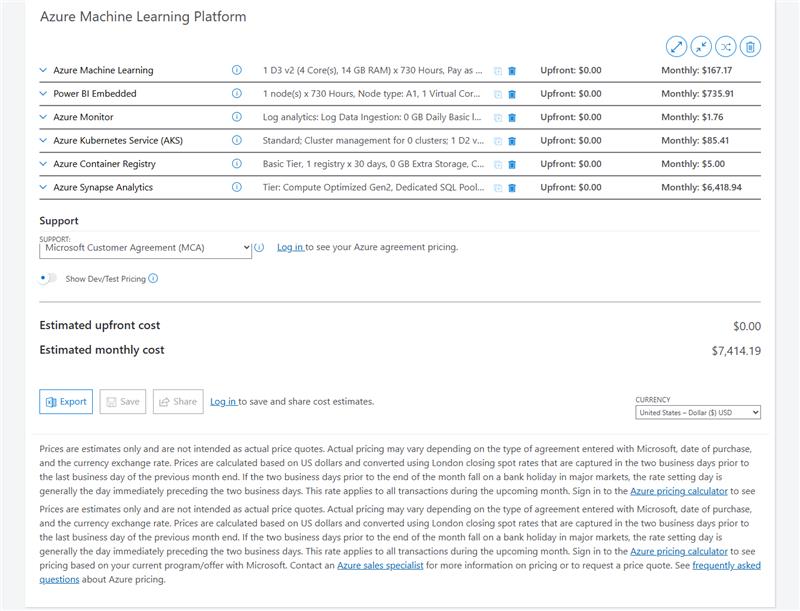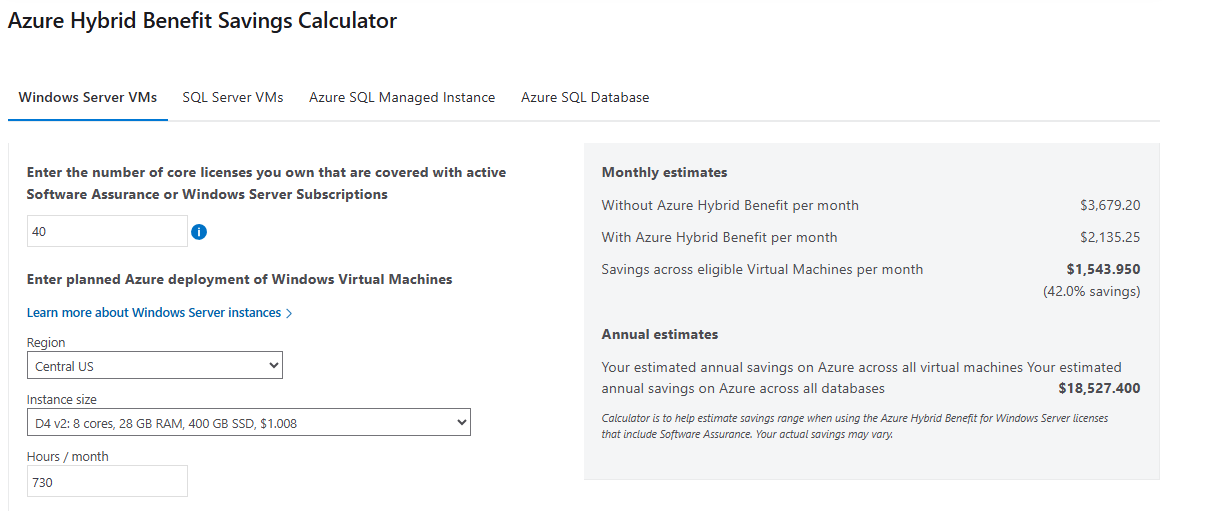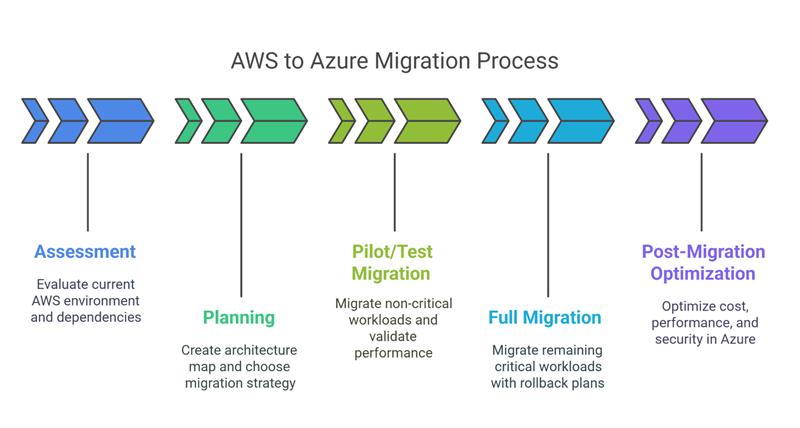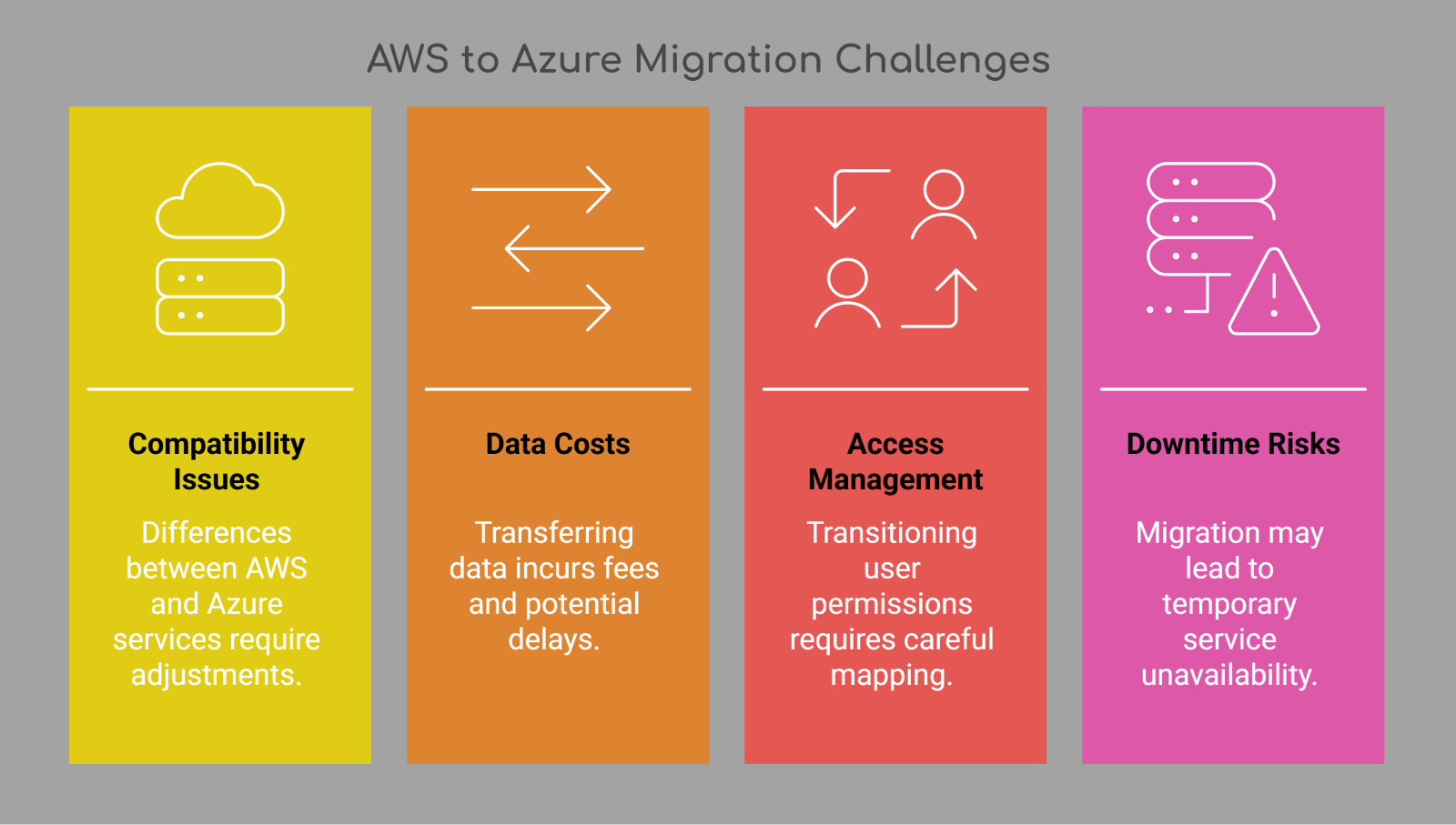It’s summer, and around 26 bird species are known to migrate to India during this season. Bird migration is a seasonal movement we can spot throughout the year, not just in winters.
Similarly, cloud migration isn’t a one-time event. It’s something we see happening all year round. As a cloud migration company, we witness businesses constantly moving their digital assets from on-premises setups to the cloud.
And the momentum is real. According to Forbes, the cloud will host more than 100 zettabytes of data this year. Among all the movements, one shift that’s catching more attention is the migration from AWS to Azure – and for good reason.
In this detailed article, you’ll find everything you need to know about cloud migration from AWS to Azure. Yes, it’s going to be a long one but packed with insights, best practices, and things we’ve learned from real migrations.
We truly appreciate the time and attention you’re giving to this topic. Let’s make it worth it.
Table of Contents
Why Migrate from AWS to Azure?
AWS holds around 30% of the total cloud market share and is leading the market. Azure follows in second place with about 21%. So, here’s a question – why would anyone move their digital assets from the #1 player (AWS) to #2 (Azure)?
We will give you some good reasons for that.
1. Cost Optimization
Many businesses use Microsoft products for their work and most of them have their licenses. So, if you are a business owner already using Microsoft products, Azure cloud provides more flexible pricing models and discounts tailored to your needs.
Businesses that switch from AWS to Azure can reduce cloud costs by:
Azure Hybrid Benefit:
Microsoft offers the Azure Hybrid Benefit which allows businesses to reuse existing on-premises licenses for Windows Server or SQL Server on Azure. This can significantly reduce costs up to 85% in some cases when combined with reserved instances.
Reserved Instances:
Like AWS, Azure offers Reserved Virtual Machine Instances, where you commit to a 1-year or 3-year term and in return, get lower pricing compared to pay-as-you-go rates.
Built-in cost management tools:
Azure provides built-in Cost Management and Billing tools. These tools let you monitor, allocate, and optimize costs. They are especially helpful for teams already using Microsoft 365 or other Microsoft services.
2. Smooth Integration with Microsoft Tools
If your team already uses Microsoft products like Office 365, Dynamics 365, or Power BI, Azure is the natural cloud choice. It’s designed to work smoothly with these tools.
Here’s what you get:
- Simplified logins and user access control through Azure Active Directory.
- Faster, more reliable connections between your apps and Microsoft platforms.
- Easier automation and workflows with Microsoft’s Power Platform (Power Automate, Power Apps, etc.).
Also Read: How to Choose the Right AWS Certified Partner?
3. Better Compliance & Data Residency Options
Azure has a strong global presence and complies with a wide range of international and industry-specific regulations. It makes it easier for businesses to stay compliant no matter what the industry is.
- Azure offers comprehensive compliance coverage. It meets more than 90 global regulations and standards, including GDPR, HIPAA, and ISO 27001.
- It maintains high levels of data privacy and security.
4. Stronger Support for Hybrid Environments
Most businesses don’t move everything to the cloud all at once. Some of their applications still run on on-premises servers. That’s where Azure excels. It offers powerful hybrid cloud solutions that make the transition smoother.
- Azure Arc allows you to manage both cloud and on-premises resources from a single dashboard.
- Azure Stack brings cloud services directly into your own data center so you can have a hybrid setup that meets your specific needs.
- This cloud smoothly integrates between local and cloud-based applications. Azure helps you transition to the cloud at your own pace, without losing control of your existing systems.
Key Differences Between AWS and Azure
AWS and Azure offer similar cloud services. But there are key differences in how they name and manage things. Here’s a quick comparison to help you understand the basics:
Criteria |
AWS |
Azure |
| Compute Power | Offers strong performance and flexibility. | Great performance, especially for businesses using Microsoft tools. |
| Storage | Reliable and scalable for any size of data. | Similar reliability, with better integration for Microsoft-based files. |
| Networking | Powerful setup, ideal for large, global systems. | Easier setup if you’re already in the Microsoft ecosystem |
| Identity & Access | Secure, with strong user control systems. | Built-in access with Microsoft login tools like Azure AD. |
| Pricing Model | Pay-as-you-go; cost adds up based on usage. | Pay-as-you-go, but with extra savings if you have Microsoft licenses (Hybrid Benefit). |
AWS to Azure Migration Checklist
AWS to Azure migration requires more than just switching platforms. In this process, you need proper planning for a smooth transition. Here is the AWS to Azure migration checklist you should tick pre-migration:
1. Assess Existing AWS Workloads
Assessment is the first step in cloud migration framework. Start by reviewing your current AWS environment. Assessment will help you understand dependencies, compatibility, and resource usage.
You need to identify what’s running: EC2 instances, RDS databases, S3 buckets, Lambda functions, etc. Some services have direct equivalents in Azure (EC2 → Azure VMs), while others might require architecture changes (AWS-specific services like DynamoDB or SQS).
Not all workloads are equally easy to migrate:
- Stateless apps are often easier to migrate to.
- Apps tightly coupled with AWS-native services may need re-architecting or careful configuration.
2. Define Business and Technical Goals
Clearly define why you’re migrating.
Business Goals:
Do you want to cut costs, improve performance, or integrate more closely with Microsoft tools?
Technical Goals:
These goals focus on improving aspects like performance, security, and modernizing infrastructure. A company might migrate to reduce latency, improve availability, or enhance data security using cloud services.
3. Evaluate Cost Implications
One of the most important steps is to compare your current AWS costs with projected Azure costs.
Look into Azure’s pricing model and see where you could save. It’s important to have a realistic cost estimate to avoid surprises. Use Azure pricing calculator for estimate cost. Below image speaks more about this:
Don’t forget to factor in Azure Hybrid Benefit if you already own Microsoft licenses. This can offer significant savings.
4. Data Residency and Compliance Needs
Data residency and compliance are important aspects to consider during AWS to Azure migration. You should add these questions to your AWS to Azure migration checklist
- Where does your data need to be stored to meet regulatory requirements?
- Which regulations, such as GDPR, HIPAA, or ISO must your business adhere to?
Step-by-Step AWS to Azure Migration Process
Migrating from AWS to Azure can be a complex process. But not with a Azure certified partner like OrangeMantra. We provide a well-defined strategy and approach with minimal disruption. Below is AWS to Azure Migration step by step guide that you can follow for a smooth migration.
1. Assessment
Assessing your current AWS environment is the first step in the AWS to Azure migration. This is important to understand your workloads, applications, and dependencies, and how they will perform in Azure.
Tools & Services: You can use tools like Azure Migrate to assess your existing infrastructure and identify what can be moved to Azure. There are some third-party tools as well that also offer valuable insights. CloudHealth and CloudCheckr are two famous names.
Inventory Workloads and Dependencies: Also, compile a comprehensive inventory of all applications, workloads, and their dependencies. It is important to understand the interconnections between systems to avoid disruption during migration.
2. Planning
If your assessment is complete, let’s move to the next step, which is to plan the migration to Azure. Here, we will create an AWS to Azure architecture diagram and choose the appropriate migration strategy.
Architecture Mapping: Till this time, you are using AWS but now you have to identify the Azure services that align with the AWS services. If you are using AWS EC2, you can map this to Azure Virtual Machines. For AWS S3, you would use Azure Blob Storage.
Choose Migration Strategy: Select the most suitable migration approach based on your needs:
- Rehost (Lift and Shift): Move workloads to Azure with minimal modification.
- Refactor: Make slight adjustments to the application to better integrate with Azure.
- Rearchitect: Redesigning applications for better performance or scalability on Azure.
- Rebuild: Completely rebuilding the application to leverage Azure’s native features.
3. Pilot/Test Migration
As an AWS certified partner, we advise you to perform a pilot or test migration before migrating all workloads. This way you can identify any issues early and ensure compatibility and performance.
Migrate Non-Critical Workloads First: For a start, migrate less critical workloads to Azure. This provides a controlled environment to test migration processes and troubleshoot any problems.
Validate Performance & Compatibility: Thoroughly test the migrated workloads in the Azure environment to know whether they are performing as expected or not. Validate application functionality, performance benchmarks, and integration points to avoid potential failures during full migration.
4. Full Migration & Optimization
Once the pilot phase has been successfully completed, you can proceed with the full migration.
Execute Full Migration with Rollback Plans: Begin migrating the remaining critical workloads. Keep rollback plans in place in case of unforeseen issues during the migration. You will need them to minimize downtime and disruption.
Post-Migration Optimization: Focus on optimizing the environment after completing the migration. This involves:
- Cost Management: Make use of Azure’s cost management tools to optimize your spending.
- Performance Tuning: If you want optimal performance in Azure environment, fine-tune workloads and configurations.
- Security Improvements: Implement best practices such as Azure Security Center for monitoring, identity management, and access control. This will keep your Azure setup secure.
Most Used AWS to Azure Migration Tools
Choosing the right tools is as important as choosing the right cloud migration partner. Below are some of the most widely used tools that will help you in various stages of the AWS to Azure migration.
Tool |
Why It’s Popular |
| Azure Migrate | Primary tool from Microsoft for discovery, assessment, and migration; deeply integrated with Azure. |
| Azure Site Recovery (ASR) | Used for lift-and-shift and DR scenarios; supports AWS VM migration to Azure. |
| Azure Database Migration Service (DMS) | Microsoft’s native tool for migrating databases from AWS to Azure. |
| CloudEndure | AWS-native tool but often used to replicate workloads to other clouds like Azure. |
There are other tools as well that are situational, meaning you can use them, but they are not necessary. Some names are Carbonite, Corent, Zerto that are great for complex enterprise environments.
AWS to Azure Migration Challenges
AWS to Azure migration is not going to be as smooth as it seems. It is highly possible that you face several challenges.
1. Compatibility with AWS Services
Many AWS services like Lambda and S3 don’t have exact matches in Microsoft Azure. So, if you build an app using these AWS tools, and later want to move it to Azure, you’ll need to change or rebuild parts of your app to make it work there.
It can take a lot of time and effort to find the right Azure replacements and adjust your setup because the two cloud platforms work differently.
2. Data Transfer Costs and Latency
Moving a lot of data from AWS to Azure can get expensive. This is because AWS charges egress fees. This is a fee that provider charges for transferring data out of their systems.
If the data is being moved across regions, it can also cause delays due to network latency. This can also slow down your apps.
3. Identity and Access Management Transitions
AWS and Azure have different ways of handling user permissions and roles. When moving from AWS IAM to Azure Active Directory, you’ll need to carefully map everything out.
This ensures that the access controls remain secure and continue to work as expected. If this step isn’t done right, it could cause access problems or create security risks.
4. Downtime Risk and Business Continuity
Even with careful planning, there’s always a chance of downtime during migration. Some services might be temporarily unavailable, which can affect users and business operations.
Without a solid rollback plan or disaster recovery strategy, this downtime could cause big disruptions to your business.
Best Practices for a Successful AWS to Azure Migration
If you want the AWS to Azure migration to be successful, first you need hire azure developers that are really skillful and then follow these best practices:
1. Document Everything
Write down every step – from how you’re moving your AWS setup to how you’re handling user access. It helps a lot when things go wrong, when new people join the team, or when you just need to remember what you did.
2. Automate as Much as You Can
Use tools like Terraform, Bicep, or ARM templates to set things up automatically. It saves time, avoids mistakes, and keeps your setup clean and consistent. Less manual work = fewer headaches.
3. Keep Monitoring Things
Just AWS to Azure migration should not be the final aim. There is much more. You should use tools like Azure Monitor and Log Analytics to track how things are running and how much they’re costing you. Regular checks help you fix issues early and keep everything running smoothly.
Post AWS to Azure Migration Checklist
Your job isn’t over yet once your workloads have been successfully moved from AWS to Azure. A few important steps after the migration will keep everything running smoothly and perform at its best. Here’s a simple post AWS to Azure migration checklist to follow:
1. Check Performance and SLAs
Make sure all your applications are running properly. Test their speed, stability, and whether they meet the service-level agreements you’ve promised.
2. Turn Off AWS Services You No Longer Need
Don’t forget to go back and shut down AWS services you’re no longer using. This helps you avoid unnecessary charges and keeps things clean.
3. Review Security Settings in Azure
Double-check that everything is secure in your new Azure setup. Look at things like user access, firewalls, and data protection to ensure compliance.
4. Set Up Cost Alerts in Azure
Use Azure’s built-in tools to monitor your cloud spending. Set alerts so you know if costs go higher than expected and keep things under control.
5. Train Your Team
Make sure your team knows how to work with Azure. A little training goes a long way in helping them manage things confidently and avoid mistakes. You may need to hire AWS developers and Azure developers (both) initially.
Our AWS to Azure Case Study Examples
As both an AWS Certified Partner and an Azure Certified Partner, we’ve helped businesses around the globe with our AWS to Azure migration services. Check out our migration from AWS to Azure examples:
Case Study 1: Global Retail Brand Cuts Costs by 30% After Moving from AWS to Azure
Industry: Retail
Region: North America
Project: Full cloud infrastructure migration from AWS to Azure
The Challenge
Our client (under NDA) was managing their ecommerce platform on AWS but was struggling with rising cloud costs, fragmented services, and limited integration with Microsoft products like Dynamics 365 and Power BI.
Our Solution
They hired AWS developers from us, and we performed a detailed analysis of their current AWS setup. We then designed a phased migration plan to move everything to Azure. We used Azure Migrate for VMs, replaced AWS S3 with Azure Blob Storage, and mapped IAM roles to Azure AD. Automation was handled through Bicep templates for consistent deployment.
The Result
- 30% reduction in cloud costs
- Better integration with existing Microsoft tools
- Improved performance with lower latency
Case Study 2: SaaS Company Improves App Performance by 40% with AWS to Azure Move
Industry: SaaS / Technology
Region: Europe
Project: Application refactoring and cloud migration
The Challenge
Our client (under NDA) had a growing SaaS platform built entirely on AWS using Lambda, DynamoDB, and CloudFront. As their customer base expanded in Europe, they wanted tighter compliance with GDPR and better local performance.
Our Solution
We re-architected the application using Azure Functions, Cosmos DB, and Azure Front Door. To minimize downtime, we used blue-green deployment. All access control was shifted from IAM to Azure Active Directory with multi-factor authentication.
The Result
- 40% boost in app speed and responsiveness
- Improved compliance with local regulations
- Seamless transition with near-zero downtime
- Unified identity management using Azure AD
Conclusion
AWS to Azure migration is indeed a big step. But with the right planning, it can lead to better performance and more flexibility. In this guide, we walked through the key stages of AWS to Azure migration and what to do after everything is moved.
The most important takeaway? Don’t rush it. Take your time to plan, test, and monitor everything. And if things feel too complex, it’s okay to ask for help.
At OrangeMantra, we help businesses make smooth and successful cloud migrations. Whether you’re just getting started or need support midway, we’re here to guide you every step of the way.
FAQs
1. What is the cost of AWS to Azure migration?
The cost depends on many factors. The size of your workloads, the amount of data transferred, the tools you use all these make an impact. AWS may charge for data egress and Azure has its own prices for things like servers and internet use. Reach out to us to know our AWS to Azure migration cost.
2. How long does it take to migrate to Azure?
It varies based on the complexity of your setup. A small migration may take a few days. But if your migration is larger and more complex, it can take weeks or even months. Planning and testing help speed things up and reduce surprises.
3. Can I run both AWS and Azure during the transition?
Yes, you can! Many businesses use a hybrid setup during migration. This allows you to test workloads in Azure while keeping things live on AWS. It ensures a smoother and safer transition.
4. Can I migrate from AWS to Azure?
Yes, you can migrate from AWS to Azure using tools and proper planning. Contact our cloud migration company to move data and services smoothly.
5. Why are companies moving from AWS to Azure?
Many companies switch to Azure for better integration with Microsoft tools. This migration also offers them flexible pricing and strong enterprise support.
6. Is Azure better than AWS?
It depends on your needs. Azure is great for Microsoft-heavy environments. AWS offers more services overall. Both are strong cloud platforms.
7. What are the disadvantages of Azure cloud?
Azure can be complex to manage, sometimes more expensive, and support may vary based on your plan.
8. How safe is the Azure cloud?
Azure is very secure. It has built-in security tools, strong compliance, and 24/7 threat monitoring to protect your data.

